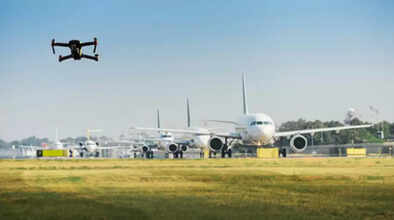Cyber Attack: Threats to the aviation industry increase, with drones and cyberattacks becoming a constant headache..

Major airports around the world have been impacted by frequent drone intrusions and cyberattacks over the past few years. Recently, two to three large drones were spotted at Copenhagen Airport in Denmark, halting flights for approximately four hours. Meanwhile, Oslo Airport in Norway also had to be closed.
Drones and digital attacks pose a major challenge.
This trend is not new in the aviation industry. Since 2017, there have been numerous attacks that have targeted not just flight safety systems but also critical components such as check-in, boarding systems, and power supplies. As a result, thousands of passengers have been left waiting at airports for hours, sometimes even days.
Major events that halted flights
In 2017 (London Heathrow-Gatwick), a British Airways data center failure stranded 75,000 passengers. In 2018 (London Gatwick), a drone intrusion halted operations for three days, resulting in the cancellation of approximately 1,000 flights. In January 2023 (USA), an FAA system failure affected 11,000 flights. In August 2023 (UK), an air traffic system glitch led to the cancellation of 1,500 flights. In July 2024, a mistake by cybersecurity company CrowdStrike grounded 5,000 flights worldwide.
In March 2025 (London Heathrow), a power station fire closed the airport for 18 hours, stranding over 200,000 passengers. In September 2025 (Poland), several airports were closed due to suspected Russian drone intrusions. On September 20, 2025 (Europe), a cyber attack on Collins Aerospace affected London, Berlin, and Brussels airports. On September 22, 2025 (Denmark-Norway), the airspace was closed for four hours after a drone was spotted.
Continuing Questions About Airport Security
These incidents have made it clear that drones and cyberattacks have become the biggest challenge for the global aviation industry. Each time, these incidents disrupt the travel of thousands of passengers and cause airlines to suffer losses worth crores. The question now is: are airports still prepared to deal with such threats, or will passengers face even greater difficulties in the future?

